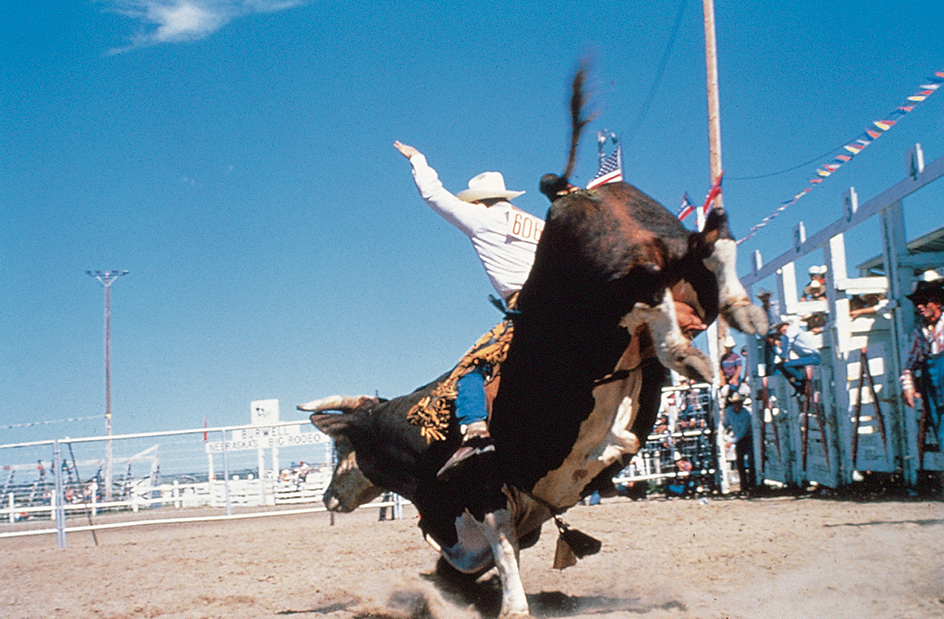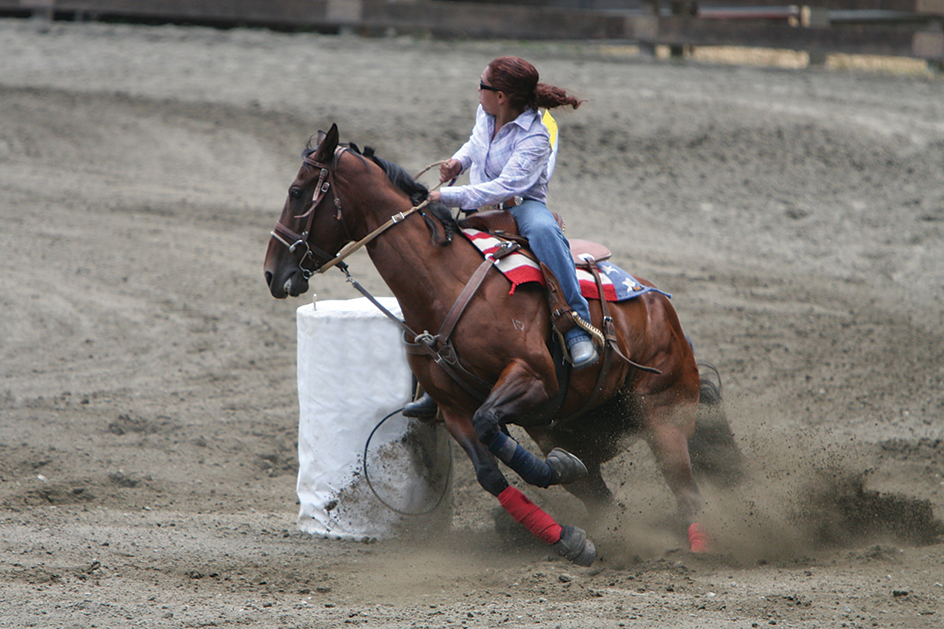Rodeo, << ROH dee oh or roh DAY oh, >> is a sport that combines the riding and roping skills of cowboys and cowgirls with the color and spirit of the Old West. The word rodeo also refers to a rodeo contest. Rodeo contests are held in many parts of the United States, Canada, and Australia.
In rodeo competition, the contestants match their riding and roping skills in rugged, exciting events. Contestants who rank high in an event receive prize money. Rodeo clowns provide additional entertainment.

There are two main groups of rodeo events: (1) rough stock events and (2) timed events. Rough stock events feature cowboys or cowgirls trying to ride bucking horses or bulls for a specified number of seconds. The judges award points to the contestants, chiefly for their form and how well they spur the animals. Timed events are judged according to how quickly the contestants complete the required task.
Most rodeos have three rough stock events and three to five timed events. The rough stock events are bareback bronc riding, saddle bronc riding, and bull riding. The timed events are calf roping, steer wrestling, team roping, steer roping, and barrel racing. In most rodeos, only women compete in barrel racing, and only men compete in the other events. But all-women’s rodeos include some events that only men enter in other rodeos. The treatment of rodeo animals in the United States follows rules established in consultation with the American Humane Association.
Bareback bronc riding
is an event in which the rider must remain mounted for 8 seconds while spurring the horse as it bucks. With one hand, the rider holds onto the bareback rigging, a device made of leather that is cinched to the horse like a saddle.
Loading the player...Bronco riding
Saddle bronc riding
is an event that resembles bareback bronc riding, except that the rider uses a saddle, a halter, and a single rein. The rider must hold the rein in one hand and keep the other hand in the air without touching himself or the horse.
Bull riding
does not require contestants to spur the animal. The riders try to remain seated for 8 seconds by holding onto an unknotted rope looped around the bull’s belly. They hold the rope with one hand, and the free hand must not touch themselves or the bull.
Calf roping
calls for teamwork between contestants and their horses. A contestant chases the calf on horseback, ropes it, and dismounts. The horse backs up so that the rope is held tight and the calf cannot break free. The contestant throws the calf to the ground and ties three of its legs together.
Steer wrestling,
also called bulldogging, is one of two events in which the contestant may have a helper, called a hazer. The hazer keeps the steer running in a straight line so the cowboy can slide off his horse and grab the steer’s horns. Then the cowboy wrestles the steer to the ground.
Team roping
is the only event in which two contestants work together. One contestant ropes a steer’s horns, and the other ropes its hind legs. The team finishes when both members have pulled their ropes tight at a 90-degree angle from the steer.
Steer roping
is held at a small number of rodeos. The event displays a way to bring a running steer to the ground before the contestant dismounts from his horse. A contestant on horseback ropes a running steer around its horns from one side. Next, the rider races the horse behind the steer to the other side, causing the steer to trip over the rope. The contestant then dismounts and ties the animal’s hind legs together.
Barrel racing
is a regular women’s event in most rodeos. Each contestant runs her horse in a cloverleaf pattern of three turns around three barrels. Judges add 5 seconds to a rider’s time for each barrel she knocks over. Horses have dominant feet, just as people have a dominant hand. Contestants can choose whether to go to the right barrel or left barrel first and determine whether to make two of the three turns to the right or the left.
Cowgirl barrel racing is a fan favorite because it is easy to understand, much like a horse race. The event has become one of the most popular for contestants and commonly has the most entries in many rodeos.

All-women’s rodeos
have some events designed specifically for women and some that resemble men’s events at other rodeos. In all-women’s rodeos, cowgirls compete in bareback bronc riding and bull riding. The cowgirls must remain mounted for 6 seconds and can hold on with two hands. A steer may be substituted for a bull.
Women also compete in barrel racing, team roping, calf roping, and break-away roping. In all-women’s rodeos, calf roping is called tie-down roping. In break-away roping, a rope is tied to the saddle horn with ribbon or string. After the rider ropes the calf, she stops her horse. The running calf breaks the tie, pulling the rope from the saddle horn.
Cowgirls also compete in goat tying and steer undecorating. In goat tying, a cowgirl rides up to a goat that is tied to a stake with a long rope. She must trip the goat to the ground and tie three of its legs together. In steer undecorating, a cowgirl on horseback chases a steer that has a ribbon taped to its back. She must get the ribbon while the steer is running in a straight line.
History.
Rodeo developed from various ranching activities of the late 1800’s. For example, after working on a trail drive or roundup, cowboys gathered together and competed in such skills as bronc riding and steer roping. The first rodeo to charge admission to spectators and offer prizes was held in Prescott, Arizona, in 1888.
Cowboys formed the first professional rodeo organization in 1936. Today, professional rodeos are sponsored by the Professional Rodeo Cowboys Association, by the Women’s Professional Rodeo Association, by the International Professional Rodeo Association, and by numerous regional associations. Rodeos for young people are supervised by the National Little Britches Rodeo Association, the National High School Rodeo Association, and the National Intercollegiate Rodeo Association.
